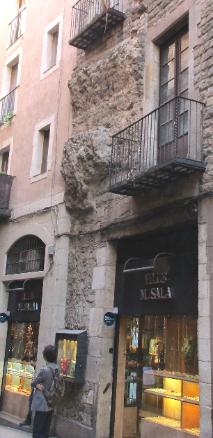
Where We Be
| Our guide mixed in history, humor, and insight in roughly equal doses. We learned about the fierce Catalan separatist movement, explored the Jewish quarter, and admired fine architectural details. |
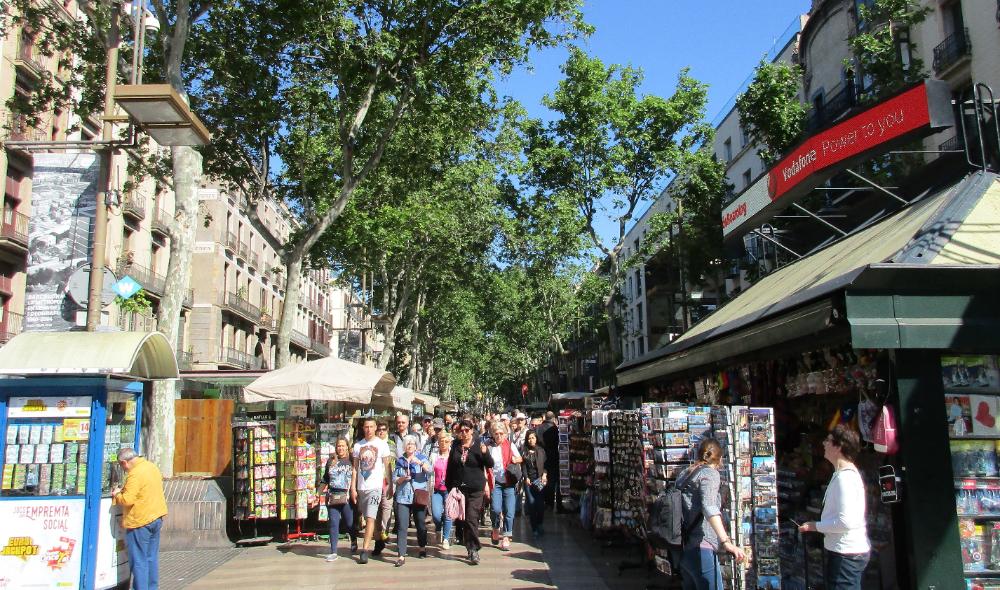
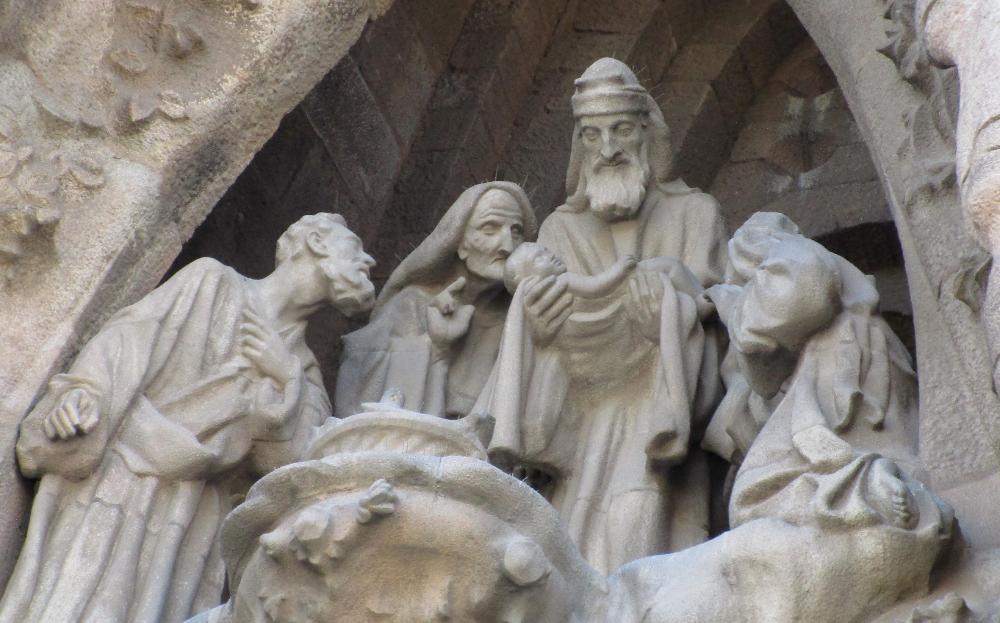
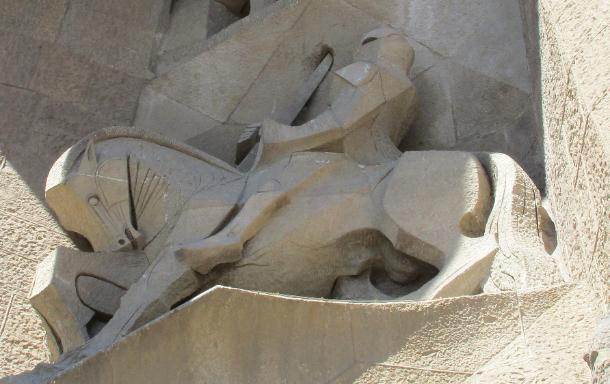
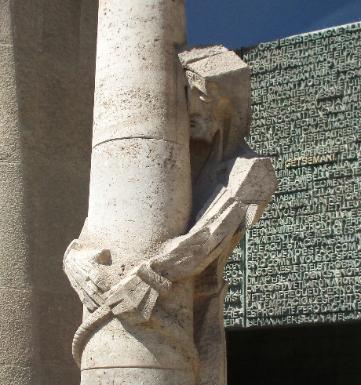
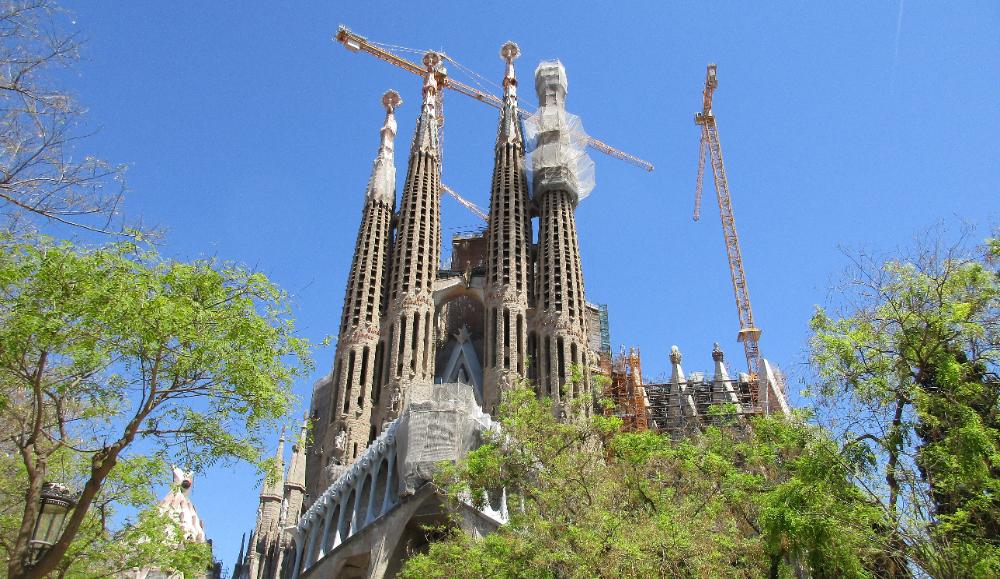
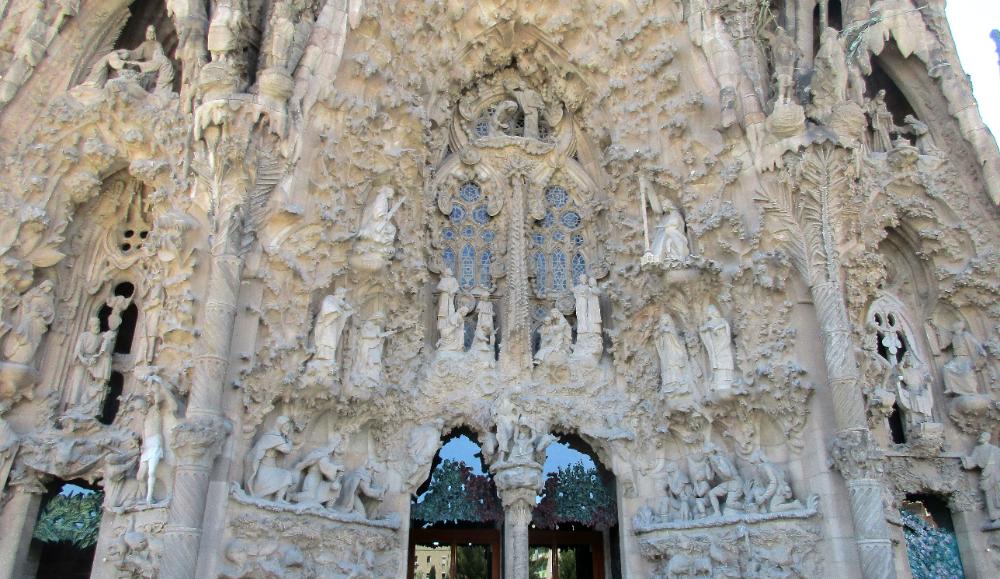
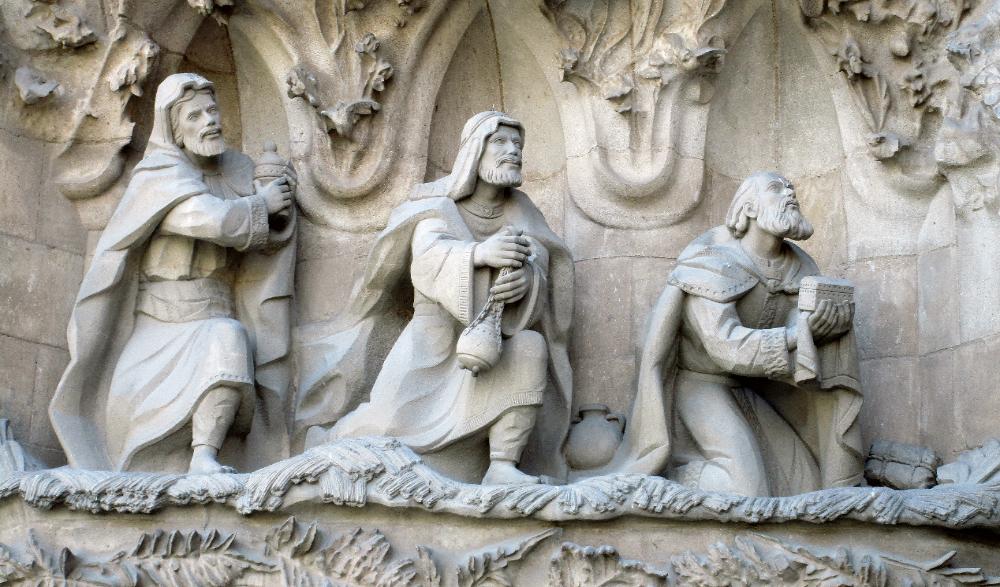
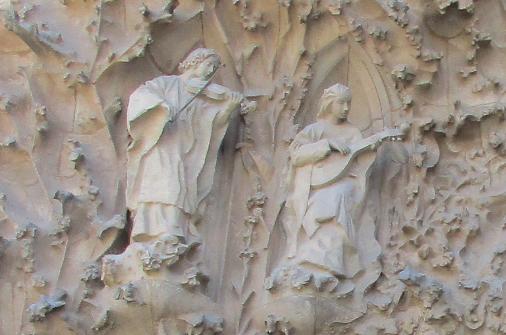
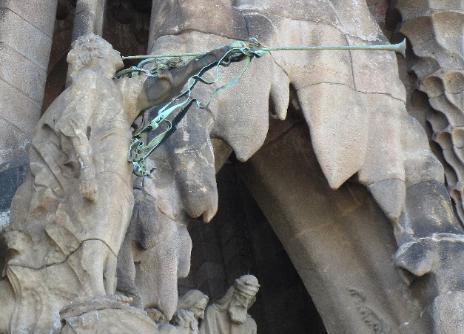
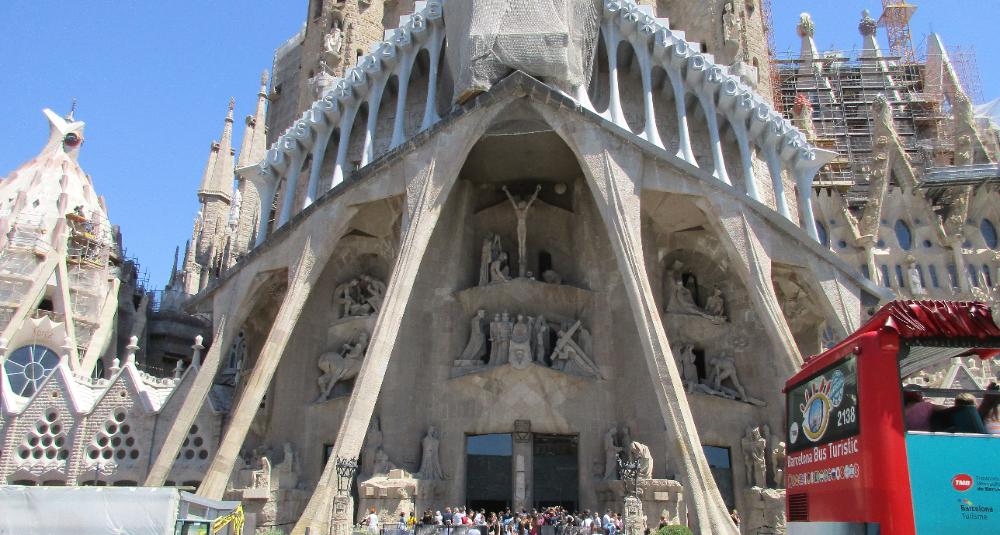
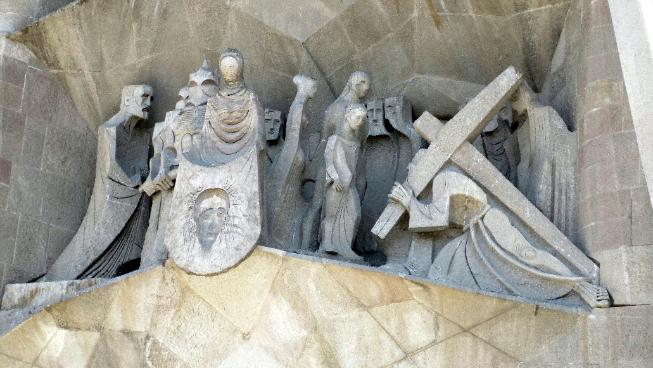
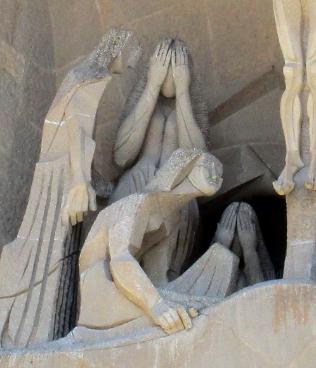
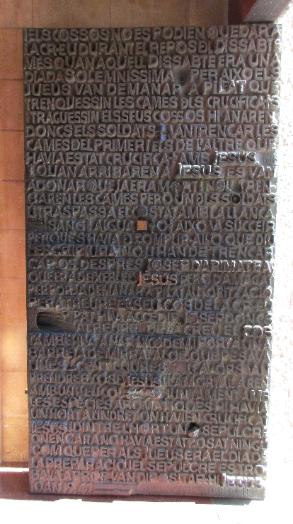
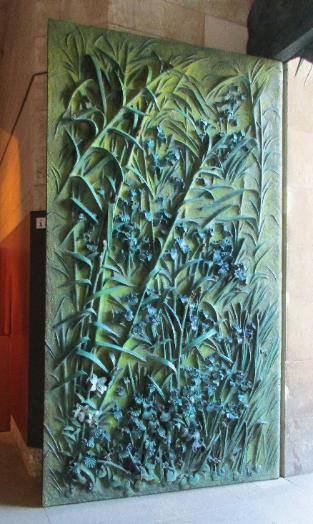
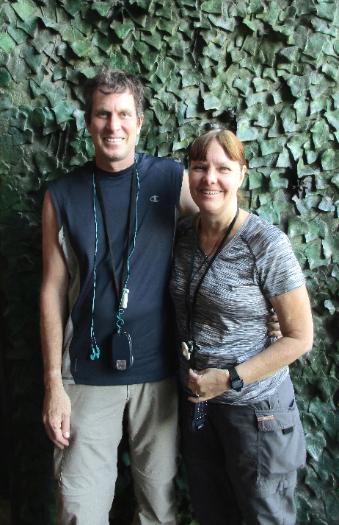
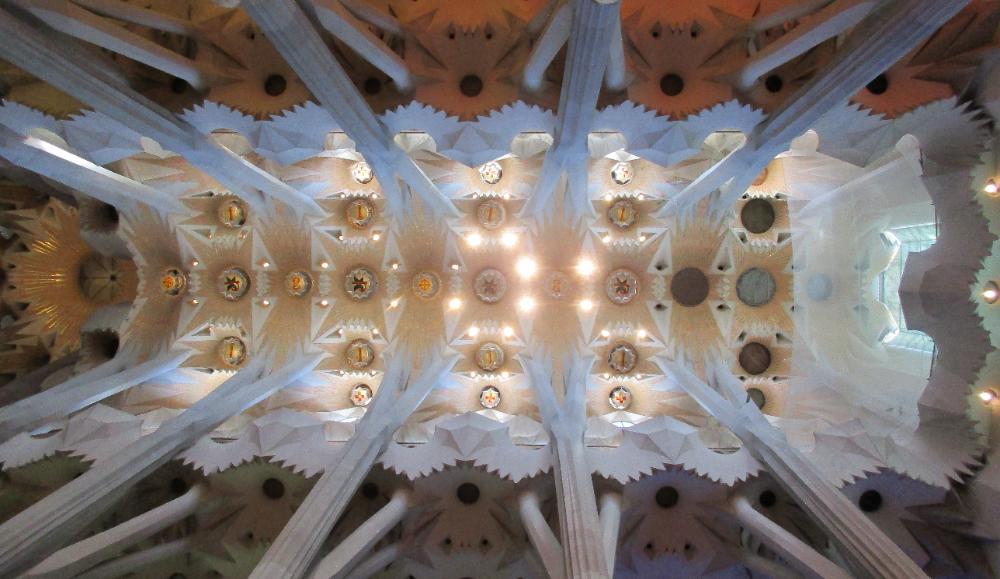
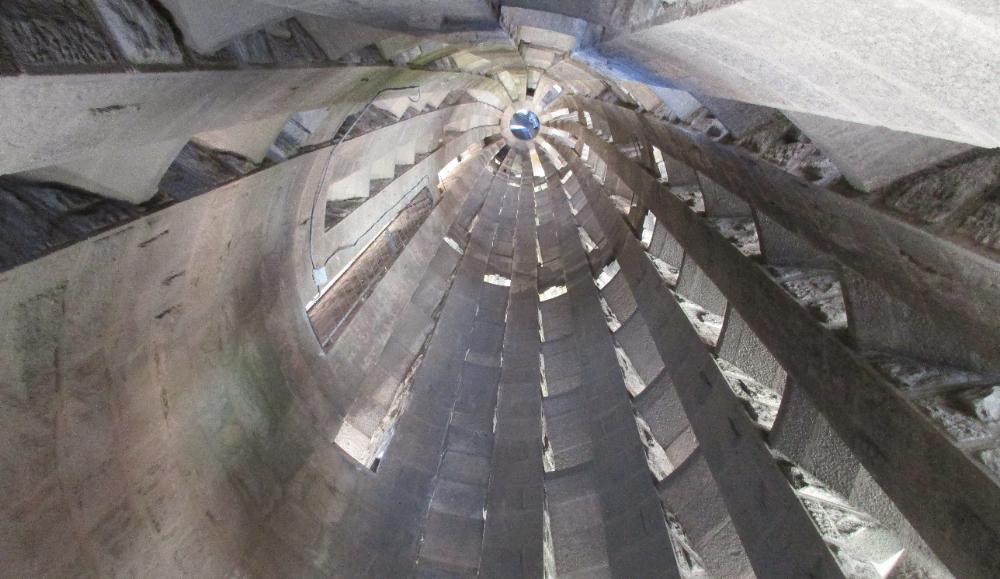
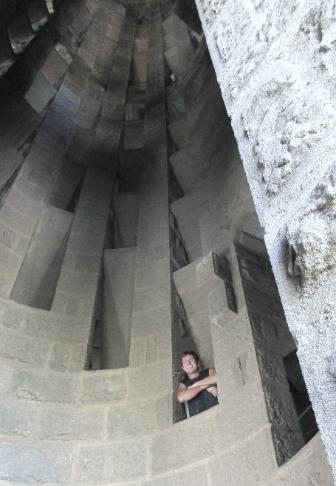
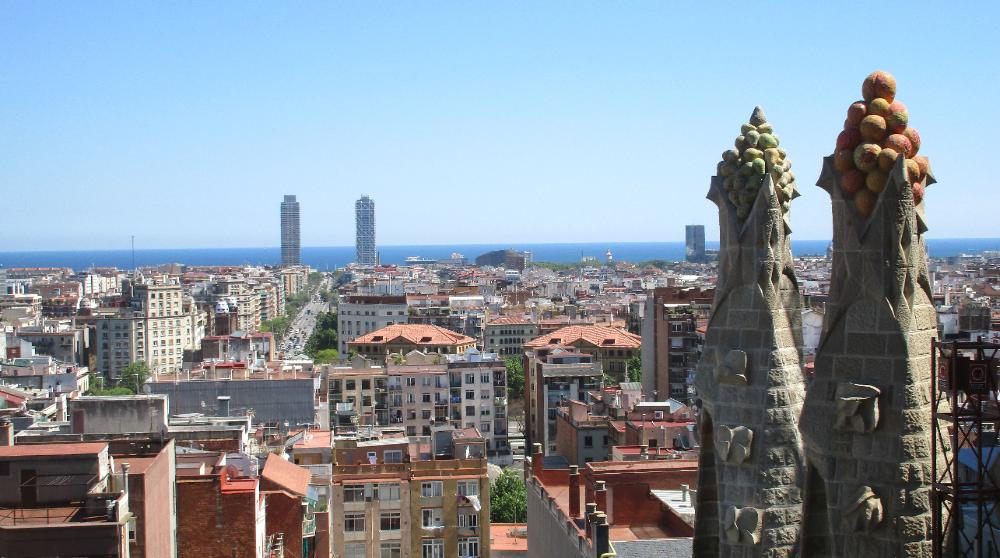
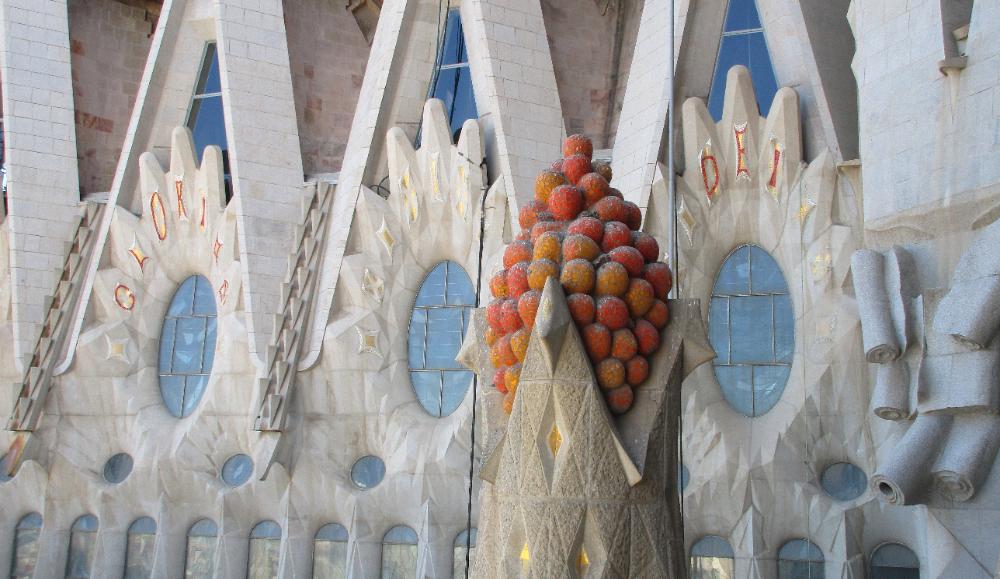
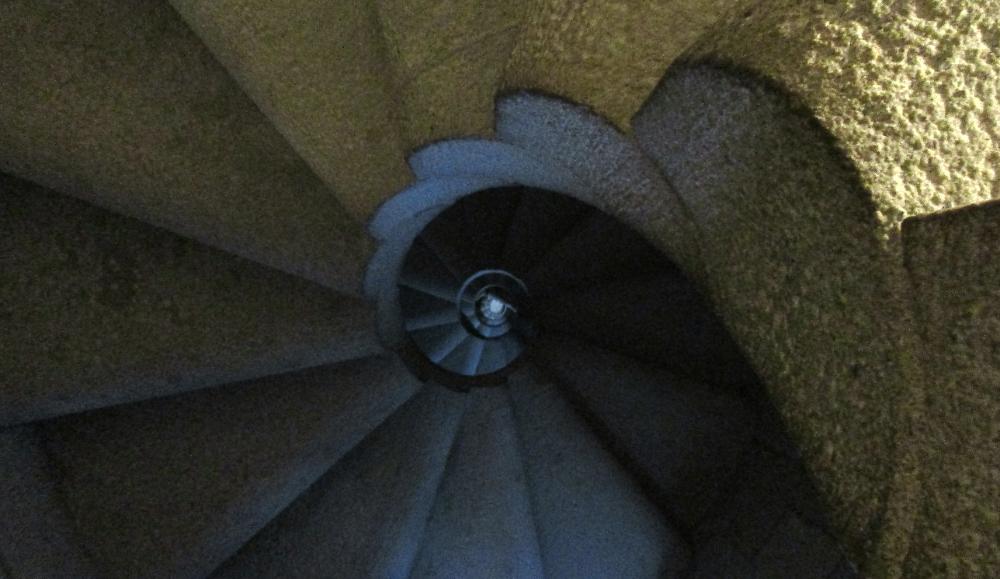
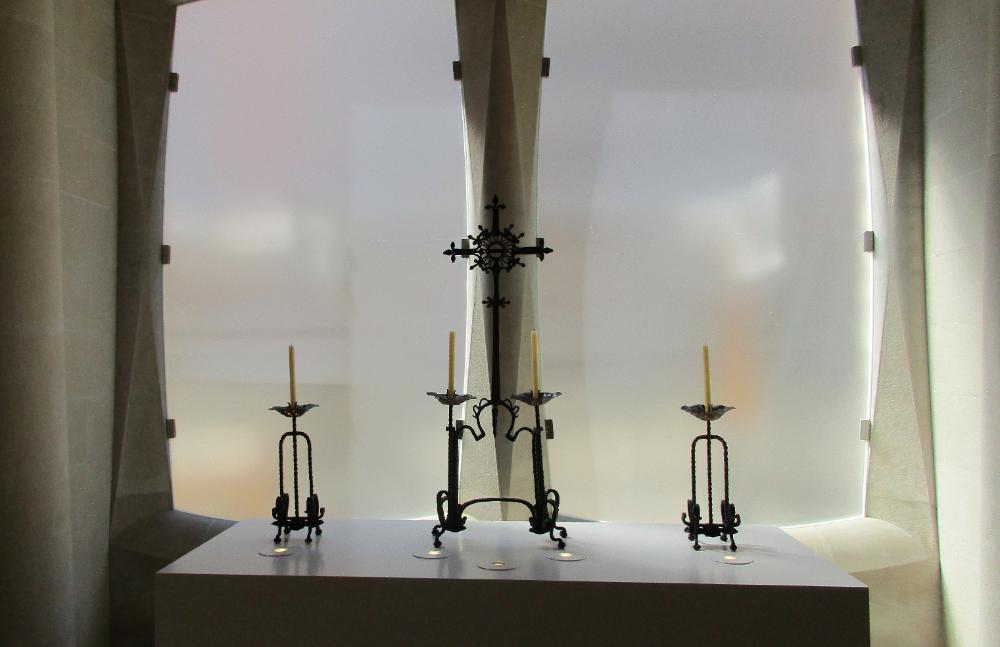
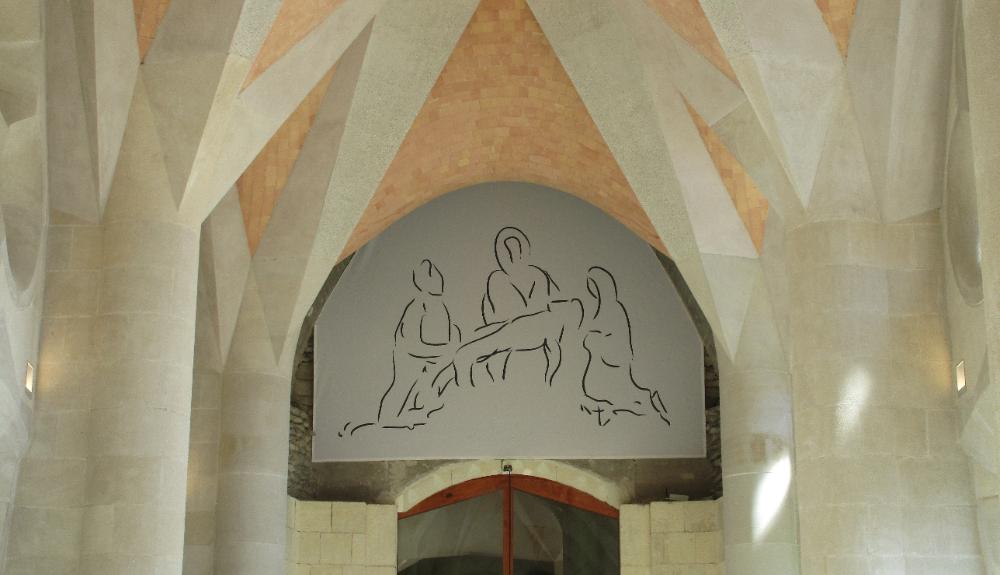
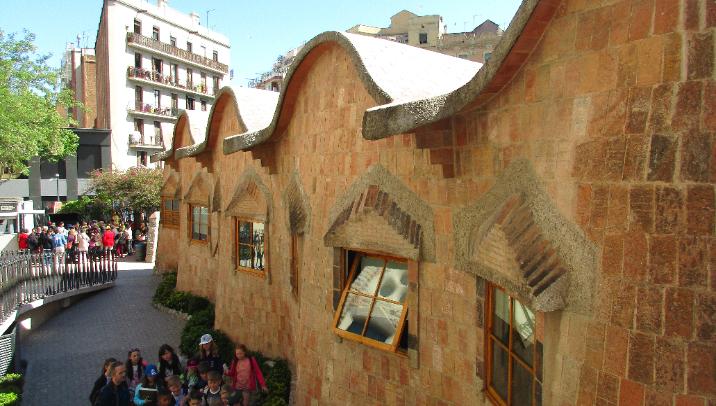
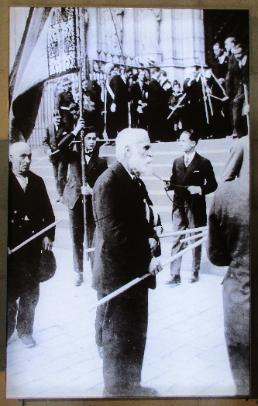
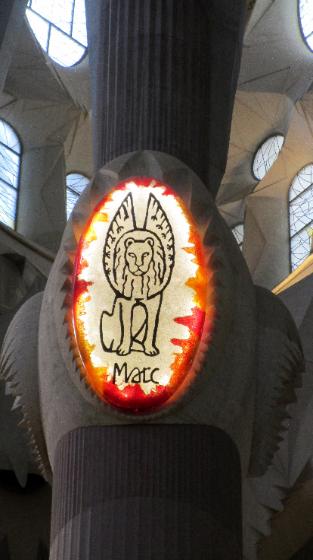
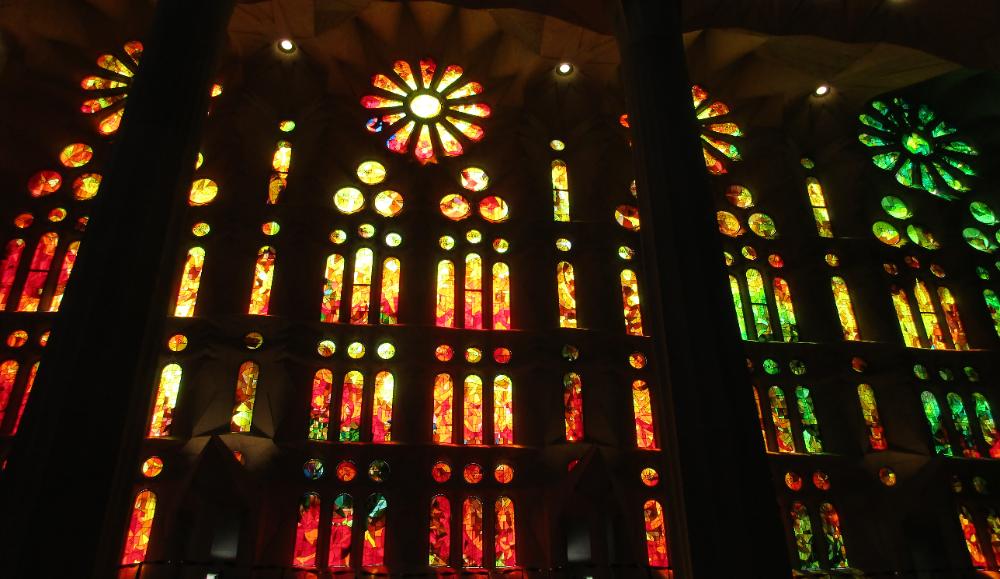
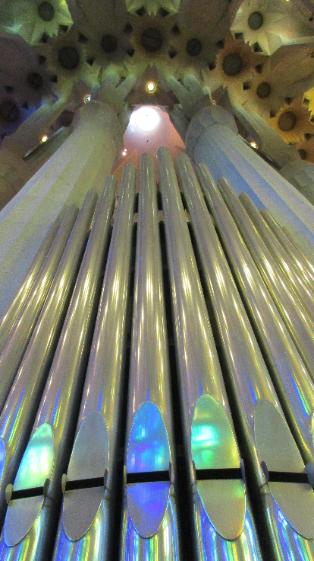
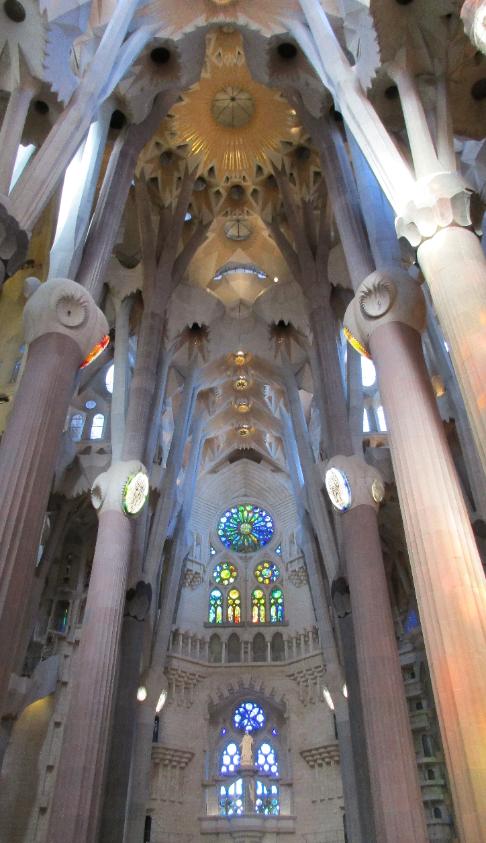
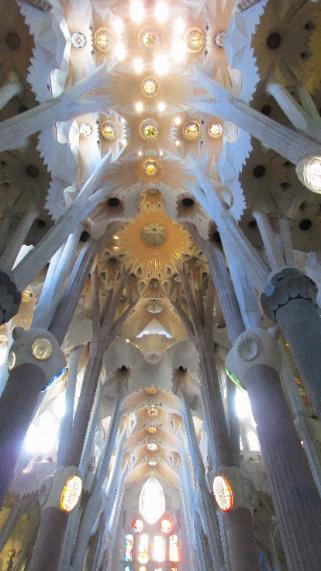
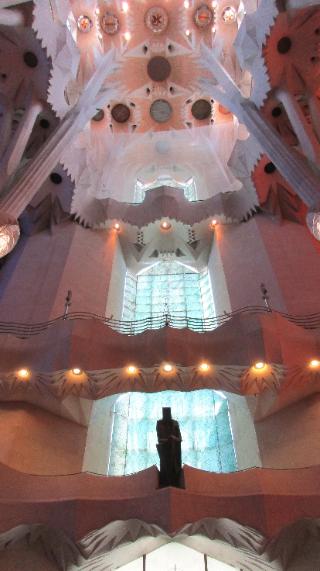
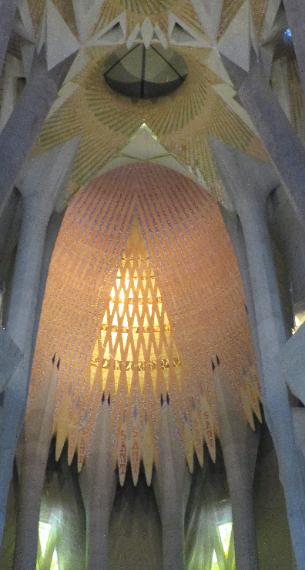
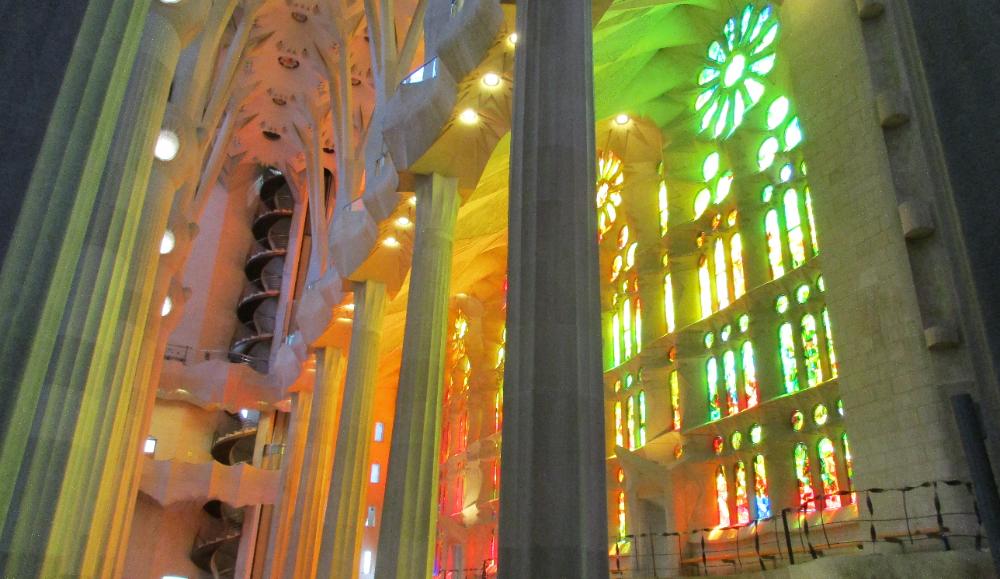
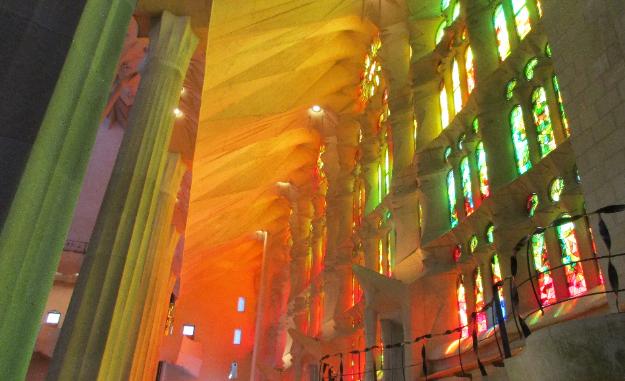
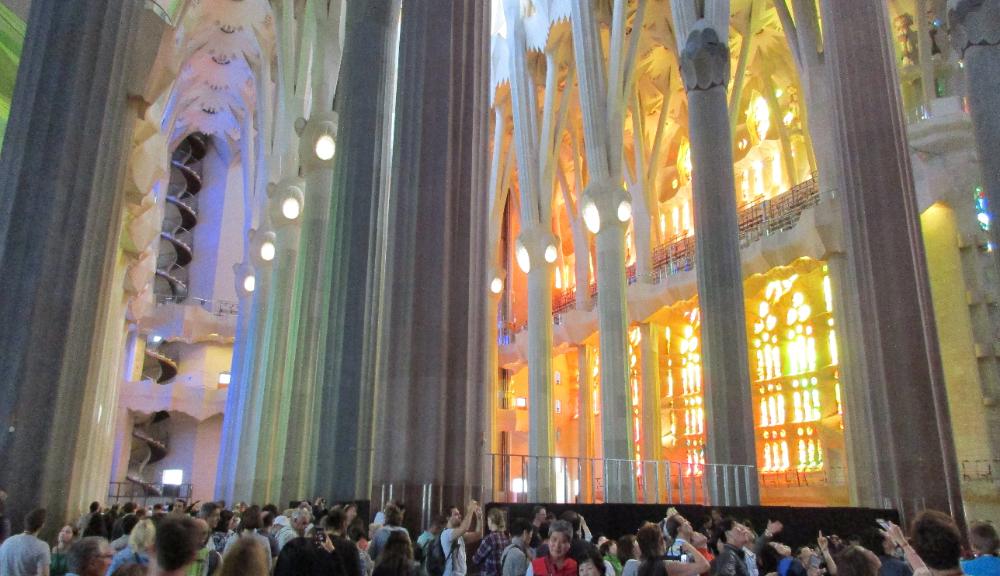
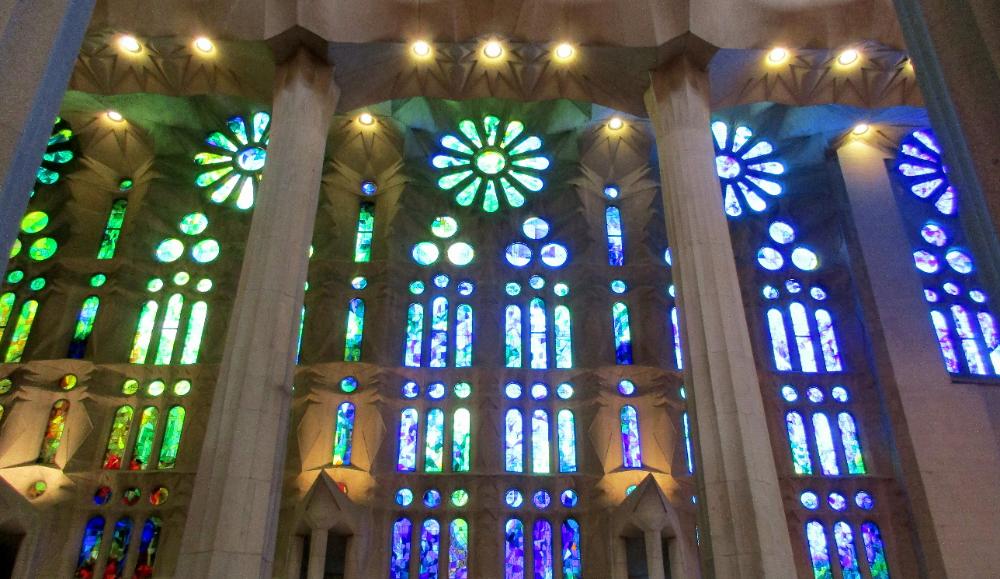
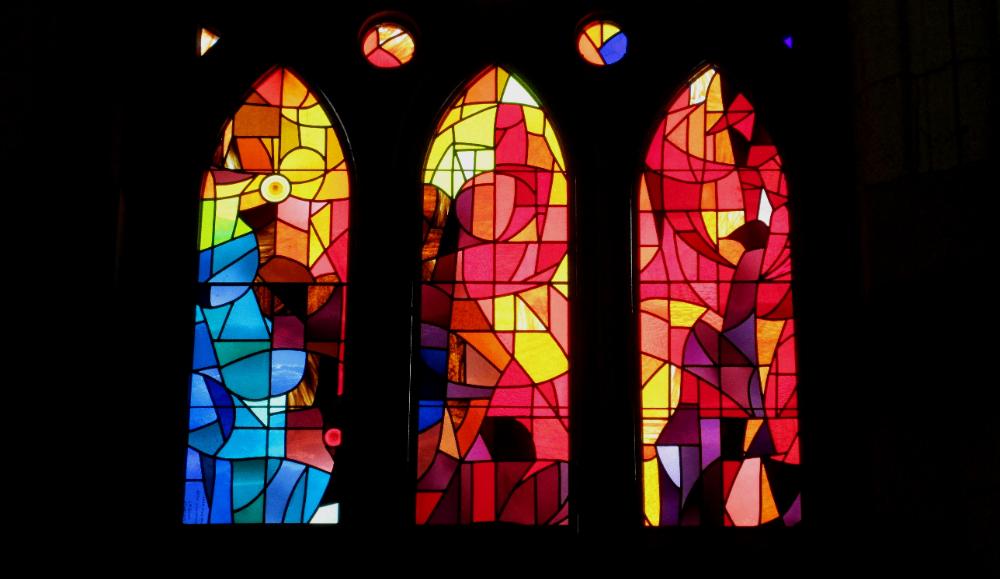
| Barcelona, Spain |
All we can say is, Wow. Even knowing ahead of
time how amazing the Church of the Sagrada
Familia was going to be, we were still knocked
off our feet by the beauty of this place. The
moment we walked through the door we were
blown away by the absolute gorgeousness of
the stained glass windows and the organic
tree-like pillars reaching up to the impossibly
high ceiling. It’s like nature brought indoors
and amplified -- like standing in a colossal
forest and looking up at a supernatural blaze of
autumn. It's dazzling, and as modern manmade
structures go, we'd have to say this is our all-
time favorite. The cathedral is so open and airy
that it simply soars, and your spirit with it.
If you only have time for one thing in Barcelona
make it the Sagrada Familia. Otherwise be sure
to ramble down Las Ramblas (the famous tree-
lined pedestrian street), visit a few of the six
other works of Antoni Gaudi sprinkled around
the city, and do a walking tour of the historic
buildings and streets of the Gothic Quarter.
time how amazing the Church of the Sagrada
Familia was going to be, we were still knocked
off our feet by the beauty of this place. The
moment we walked through the door we were
blown away by the absolute gorgeousness of
the stained glass windows and the organic
tree-like pillars reaching up to the impossibly
high ceiling. It’s like nature brought indoors
and amplified -- like standing in a colossal
forest and looking up at a supernatural blaze of
autumn. It's dazzling, and as modern manmade
structures go, we'd have to say this is our all-
time favorite. The cathedral is so open and airy
that it simply soars, and your spirit with it.
If you only have time for one thing in Barcelona
make it the Sagrada Familia. Otherwise be sure
to ramble down Las Ramblas (the famous tree-
lined pedestrian street), visit a few of the six
other works of Antoni Gaudi sprinkled around
the city, and do a walking tour of the historic
buildings and streets of the Gothic Quarter.
| The best thing we did was take our audio headphones off at the start and simply let the beauty of this place wash over us. THEN we listened to the audio guide. |
| Looking straight up the Nativity Tower is like something out of a sci-fi film |
| Tower windows let you look out every now and again. Even here, out of the way, are details like these doves perched on green branches one one of the spires. |
| The tower views of Barcelona are spectacular on a clear day |
| Whimsical decorations are a hallmark of Gaudi's style, like this chalice of grapes topping one of the lower spires (symbolizing the Eucharist) |
| Looking down the spiraling staircase is pretty cool too |
| On your way out, take some time to explore the cloister which runs all the way around the church. Some of the simply decorated spaces there are quite lovely. |
| The cloister helps insulate the church from outside noise and lets you move between various areas of the church without interrupting worship |
| Columns branch out at top like living trees. Gaudi's intent was for the interior of the cathedral to feel like a sacred wood. |
| Nothing clutters the view: you have one grand cathedral space where your eye is naturally drawn upwards towards the heavens |
| Christ on the cross hangs suspended almost invisibly in midair over the main altar under an umbrella of light |
| Everywhere you look, beauty and light. The statue at center is St. George, patron saint of Catalonia. |
| We were both deeply moved by the beauty and atmosphere of this place. Light through stained glass creates all this color on the church's white walls and pillars. |
| Fellow tourists give some perspective on just how big the cathedral is |
| Light pours in from the tops of the columns in the nave like the sun's rays shining through a forest canopy |
| To one side you have primarily red and orange colors, representing fire and light |
| To the other side you have soothing blue-and-green colors, representing water |
| The stained glass depicts no images so the glorious colors themselves become the focus |
| Multiple organs, all playable from one console, will eventually incorporate some 8,000 pipes! |
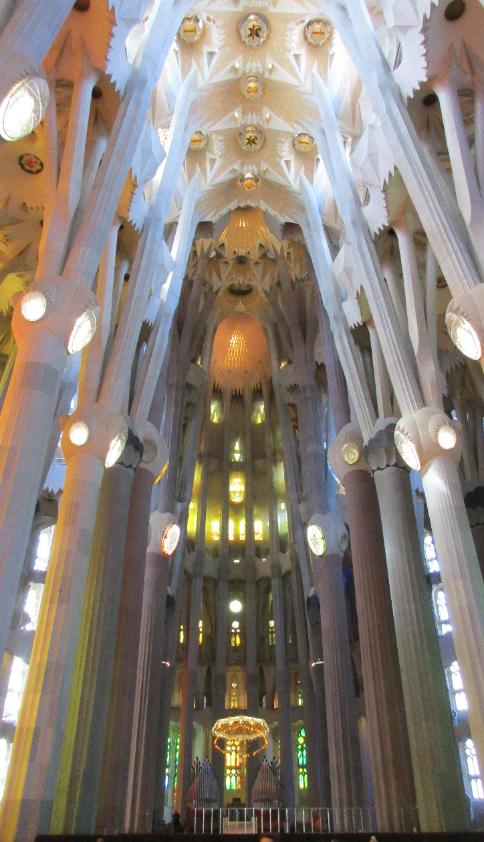
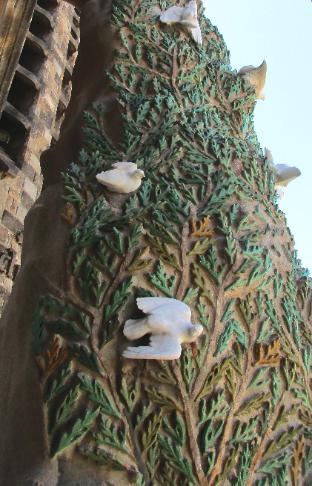
| Locals and tourists alike love to stroll along tree-lined Las Ramblas |
| At the hugely popular La Boqueria marketplace on Las Ramblas, you'll find every kind of food imaginable -- including meat cones (paper cones filled with meat chunks for €1 each) |
| Here we had a couple beers along with tasty morel mushrooms sauteed in a brandy liqueur |
| Our last suggestion, time permitting, is to take a walking tour of the Gothic Quarter (free other than a tip to your tour guide). Our tour started in this pleasant square. |
| If you like cobblestone streets and old historical buildings full of stories from the past, you'll enjoy a walking tour around the Gothic Quarter |
| And we particularly liked seeing these old Roman columns towering skyward in the midst of an apartment complex. You can still see parts of the Roman wall that once surrounded the city sticking out from buildings built around and on top of them. |
| We got to see Sant Felip Neri church where Gaudi went to pray each day |
| Las Ramblas eventually leads to the Mediterranean Sea, where you'll find Columbus pointing towards the Americas AND this blissfully happy crayfish |
| At its southern end you'll find the marina and cruise port terminal, a popular place to relax seaside on a sunny day |
| Just outside the cathedral is a small school built by Gaudi for the children of the construction workers. It has all of Gaudi's usual curving lines and whimsy. |
| The tallest spires are still being built! Once they're completed (in 2026 perhaps at the centennial of Gaudi's death?), this will be the tallest church in the world. |
| The Nativity Facade -- mostly completed in Gaudi's lifetime -- faces east and has an almost "melty" look to it |
| The joyful images here celebrate Christ's birth |
| The three wise men make their offerings |
| And even the angels sing and trumpet the newborn king's arrival |
| The Passion Facade faces west and is much more stark by design (as if made of bones) |
| Gaudi built the Nativity Facade first, believing that if he had started with the Passion Facade people would have found it too harsh and painful |
| The imagery here is purposefully grim and blocky, bringing home the suffering of Jesus during his crucifixion |
| When I first I visited this place over thirty years ago in 1984, there was no central nave and no interior at all! It was still being constructed. To see it now with its interior essentially complete is beyond impressive. |
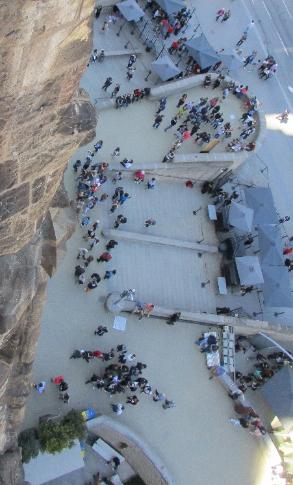
| Las Ramblas |
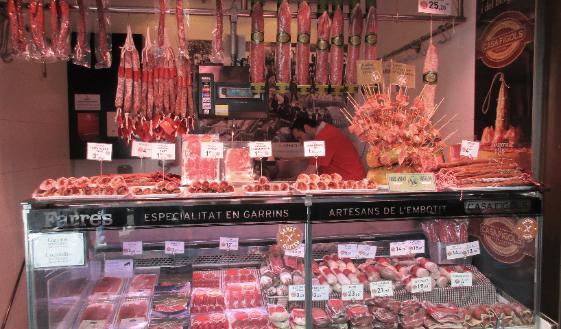
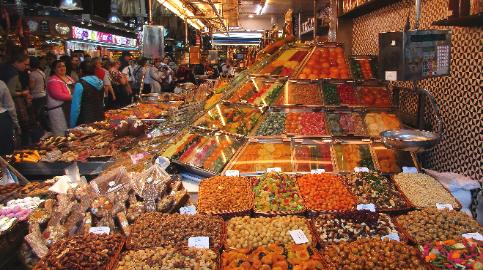
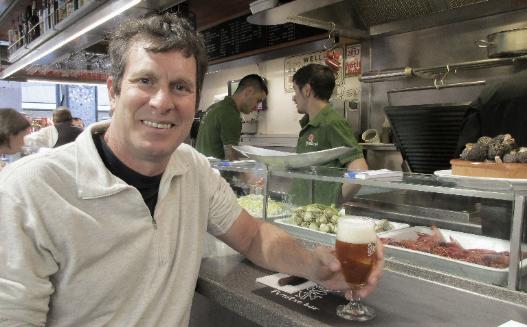
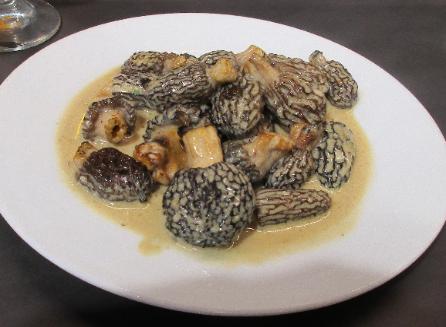
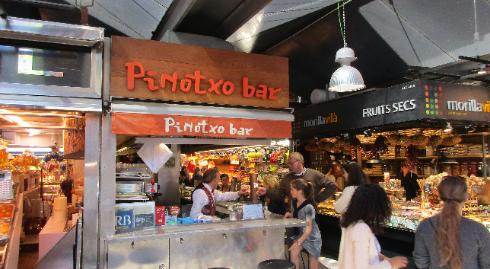
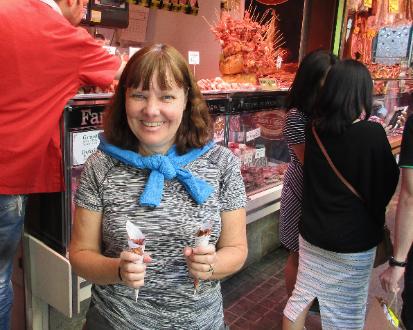
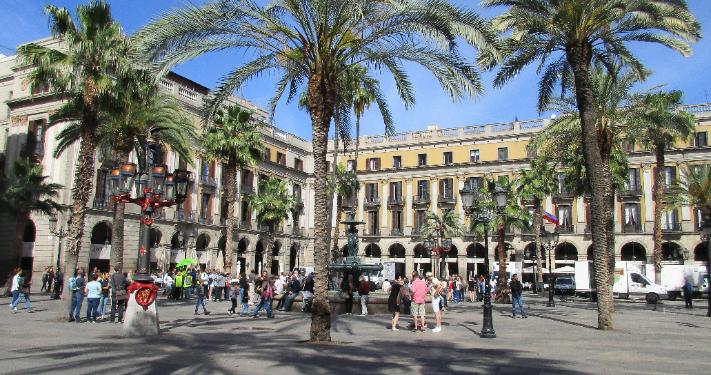
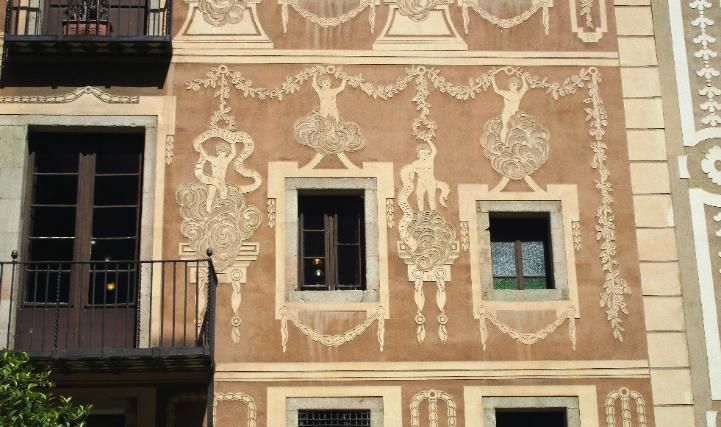
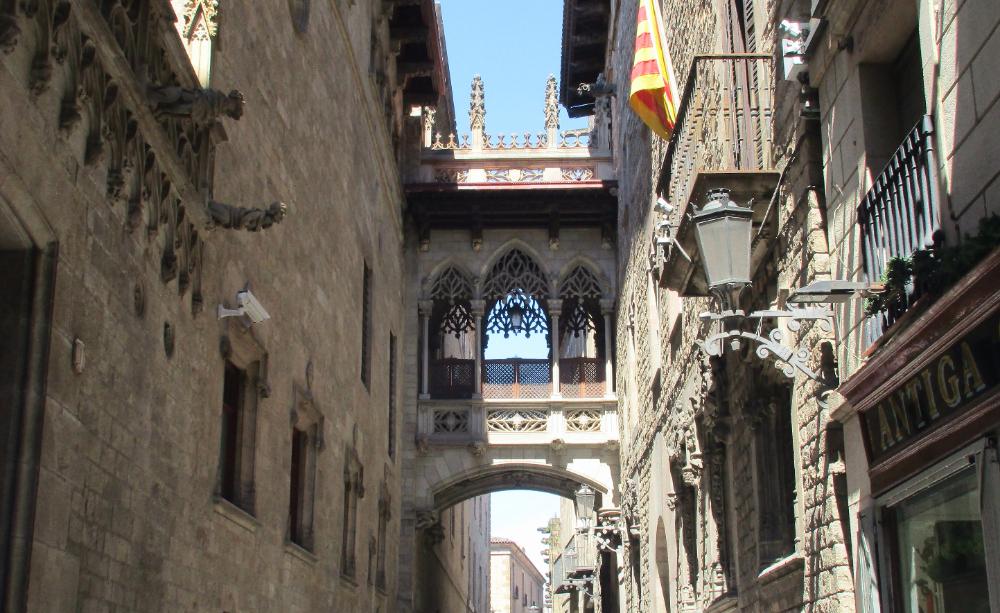
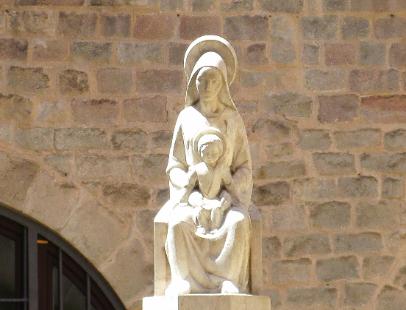
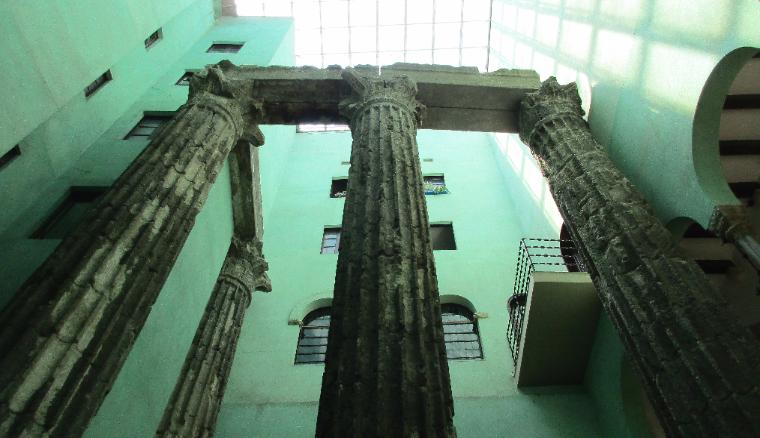
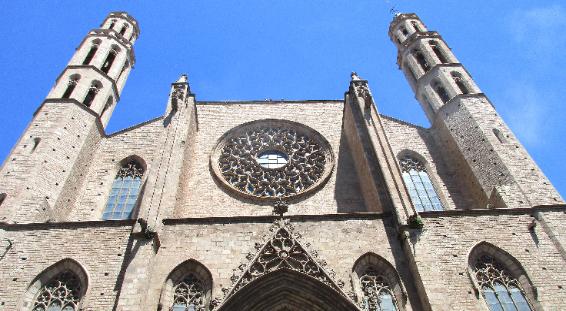
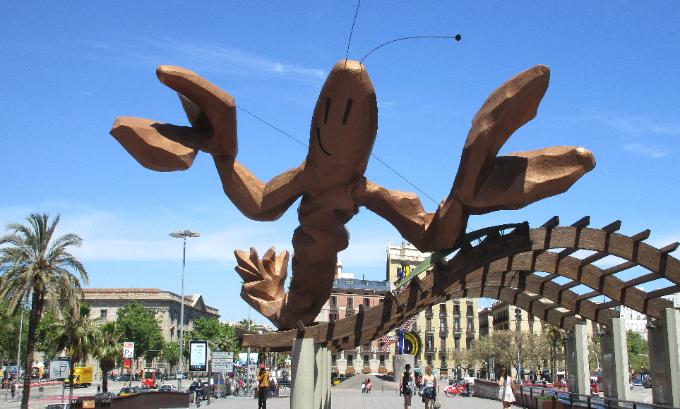
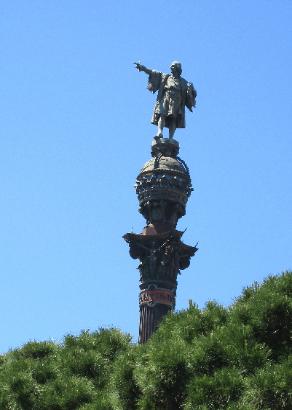
| There are stalls for fruits, meats, cheeses, tapas, and a thousand other things. We parked ourselves at this tapas bar called Pinotxo. |
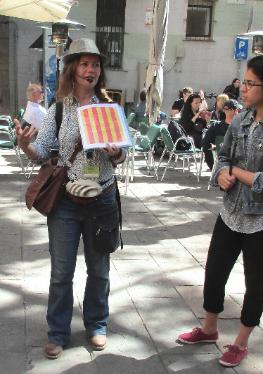
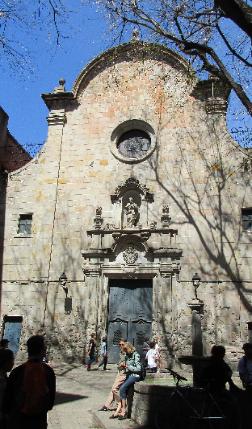
| We saw cathedrals built in a fortress-like style and “gothicized” at a much later date |
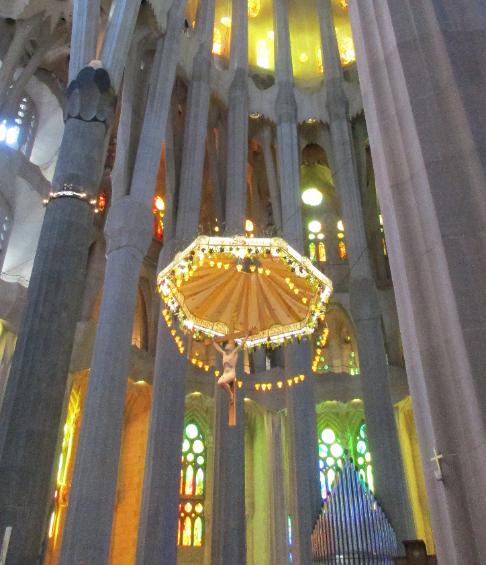
| Despite its huge size, attention is given to the smallest detail, like this lion symbol for St. Mark |
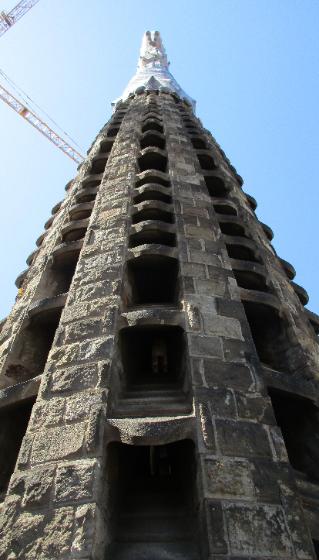
| An elevator takes you partway to the top of this tower -- then you can walk up or down from there |
| This is Antoni Gaudi, clearly one of the most visionary architects of all time |
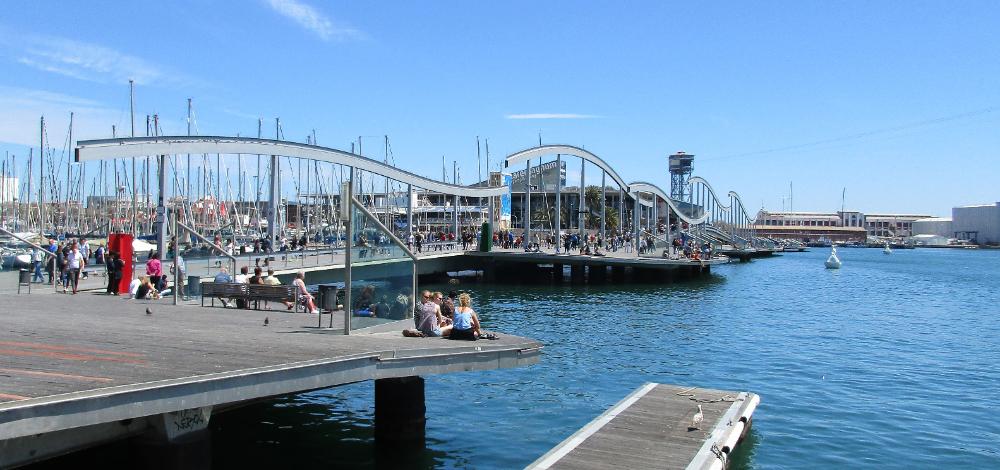
| Gothic Quarter |
